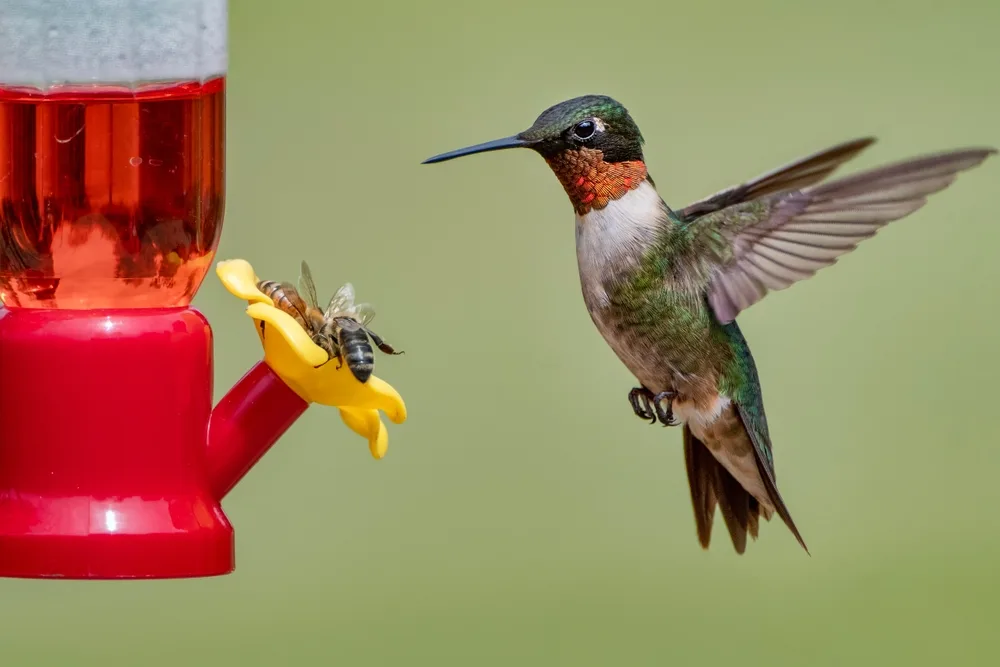Discover seven effective methods for keeping bees and wasps away from your hummingbird feeders without harming these important pollinators.
Reader Darlene Clay from Myerstown, Pennsylvania, wonders, “How can I prevent bees from accessing my hummingbird feeder?”

Hummingbird feeders filled with sugar water are irresistible to these tiny birds, but they also attract unwanted guests such as ants, wasps, and bees, causing issues.
For frustrated backyard bird enthusiasts, the temptation might arise to resort to pesticides or insecticides to repel these pests.
However, Emma Greig, who leads Project FeederWatch at the Cornell Lab of Ornithology, advises against such measures due to their potential harm to birds and declining bee populations.
“It’s possible to discourage insects while respecting their role in nature,” says Emma.
Instead, try these natural remedies to deter bees and wasps from your hummingbird feeders. Your feathered friends (and the bees, too!) will appreciate it.
1. Use Saucer Feeders to Keep Bees and Wasps at Bay
Birding experts Kenn and Kimberly Kaufman explain, “Honeybees are attracted to sugary substances but lack the long bills and tongues that enable hummingbirds to access nectar deep within feeders and flowers.
Using a hummingbird feeder with a dish below and feeding ports above prevents bees from reaching the liquid. Ensure any spilled sugar water around the feeder is promptly cleaned up.
If bees persist, consider placing a shallow dish of sugar water some distance away from your main bird-feeding area to divert them.”
2. Install Ant Moats on Your Hummingbird Feeders
Ant moats, typically 3 inches wide and 1 to 2 inches deep, should be hung above hummingbird feeders filled with sugar water.
Water acts as an effective barrier as ants cannot swim. Alternatively, invest in hummingbird feeders equipped with built-in ant moats and ensure these moats are regularly cleaned and filled with water.
3. Hang Hummingbird Feeders Using Fishing Line
Ants cannot climb thin fishing lines, preventing them from accessing your hummingbird feeders.
4. Apply Nectar Guard Tips to Hummingbird Feeder Holes
Nectar guard tips keep bees, wasps, and yellow jackets away from hummingbird feeders while still allowing hummingbirds access to the nectar. You can also obtain replacement yellow bee guards for glass bottle feeders.
5. Occasionally Relocate Feeders
Moving feeders by a few feet periodically can help confuse insects. Birds will still easily locate them, but insects often lose track.
6. Place Fake Wasp Nests Nearby
Eliminate any active wasp nests from the vicinity of your feeders and hang fake wasp nests in sheltered areas to deter real wasps.
These wereps are territorial and avoid areas they believe are already occupied.
7. Cultivate Bee- and Hummingbird-Friendly Flowers
Provide bees with an appealing alternative by planting nectar-rich flowers in containers and gardens.
Pollinators will be drawn to vibrant annuals such as fuchsia, nicotiana, and nasturtiums, as well as perennials like trumpet vine, bee balm, and cardinal flower.
